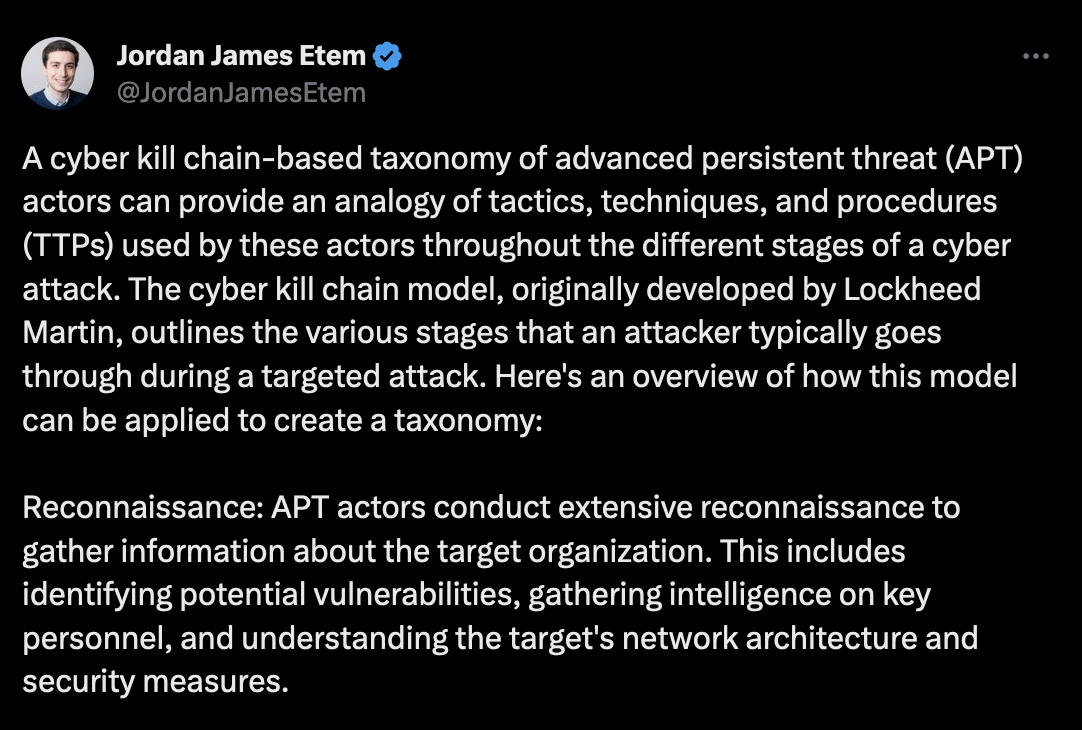Understanding the interconnected landscape of cyber threats that operate online can help organizations stave off costly attacks and implement defensive strategies more efficiently. The so-called Cyber Kill Chain offers a concise blueprint of attacks that are common online.
Having such a blueprint makes it easier to mitigate attacks with preemptive simulations and protocols. Simulations such as these are extremely effective for unearthing core vulnerabilities in mission-critical infrastructure.
This article should help you better understand how this kind of defensive tool works and what you can do with it. We’ll review:
- What is the Cyber Kill Chain?
- How is the Cyber Kill Chain Used?
- Steps in the Cyber Kill Chain
- Frequently Asked Questions (FAQs)

Image by Gerd Altmann from Pixabay
What is the Cyber Kill Chain?
The Cyber Kill Chain is simply the computer and network-related version of the military staple concept by the same name. It is a conceptual framework or pipeline prototype used to illustrate the primary stages of an attack.
The concept of a "cyber" kill chain was first created by Lockheed Martin in 2011 and is now widely recognized as a go-to cyber attack concept map.
How is the Cyber Kill Chain Used?
The Cyber Kill Chain helps organizations understand how cybercriminals and attackers do what they do, step by step. Understanding this chain helps organizations better defend themselves against cyberattacks. Benefits include:
- Identifying and mitigating attacks: Attacks leveraging malware, trojan horses, social engineering, and other techniques to do damage to an organization can be identified and potentially mitigated through careful study of the Cyber Kill Chain, as are the internal vectors for such attacks.
- Fixing vulnerabilities: The Cyber Kill Chain also opens the door to fixing identified vulnerabilities and verifying the effectiveness of each solution you implement. This lends certainty to the process of drafting compliance frameworks and more.
Putting the Cyber Kill Chain to use in bolstering your cybersecurity processes is important, but it can be a challenge for anyone new to the concept. After all, knowing how kill chains work in cyberspace doesn't automatically reveal specific examples of these in action.
We'll cover each of the steps in the Cyber Kill Chain below as well as a few of the top questions many have regarding this important framework.
Steps in the Cyber Kill Chain
The following steps form the basis of the Cyber Kill Chain:
1. Reconnaissance
This stage of the Cyber Kill Chain is all about research. Attackers scope out their targets, amassing intel and discovering new vulnerabilities. This process often takes place online, but it can also branch out into real-world interactions if these are deemed to be potentially fruitful.
2. Weaponization
At this point, cybercriminals have gotten their hands on the intel needed to plan their next attack. They then endeavor to weaponize this information by creating appropriate malware and adapting their tool set to better fit their target.

Image by Reto Scheiwiller from Pixabay
3. Delivery
With the Reconnaissance and Weaponization stages completed, attackers turn their attention to the active use of their carefully honed tools and strategies.
From phishing campaigns to zero-day exploits and beyond, cybercriminals attempt to "deliver" their toxic payloads into an organization's infrastructure for eventual gain.
4. Exploitation
This step centers around the use of vulnerabilities in an organization's network and internal processes to achieve even deeper penetration into critical systems. In the absence of effective countermeasures, this step can lead attackers directly to their intended targets.
5. Installation
At this point in the process, attackers inject malware into targeted systems and networks. A number of destructive payloads may be chosen for this purpose, including:
- Rootkits: These multifaceted toolsets help attackers bypass security features on targeted devices and avoid detection while doing so.
- Trojans: These kinds of malicious tools disguise themselves as legitimate applications that users unwittingly install. Once installed, they allow for more sophisticated manipulation of important devices to take place without alerting suspicion.
- Backdoors: These can be intentional backdoors left in place by legitimate developers that attackers simply misuse or novel backdoors created by their own malicious software.

Image by Pete Linforth from Pixabay
6. Command and Control
This step takes place once attackers have effectively compromised a target device and taken it over. From this point on, they issue commands remotely to the device in question, controlling it from afar to fit their objectives.
7. Actions on Objectives
This is the final link in the chain, and it revolves around the attackers' interests at a given point in time.
Whether cybercriminals are looking to coerce companies to pay them directly via ransomware or leverage their newly compromised devices to engage in other attacks, the results from here on out are seldom positive for victims.
For a bit more information on the Cyber Kill Chain, check out the following video:
Creating completely secure and regulation-compliant networks starts with understanding the ways in which attackers wage war on organizations. Familiarity with the Cyber Kill Chain allows organizations to identify threats more efficiently and design their network infrastructure with potential vulnerabilities in mind.


